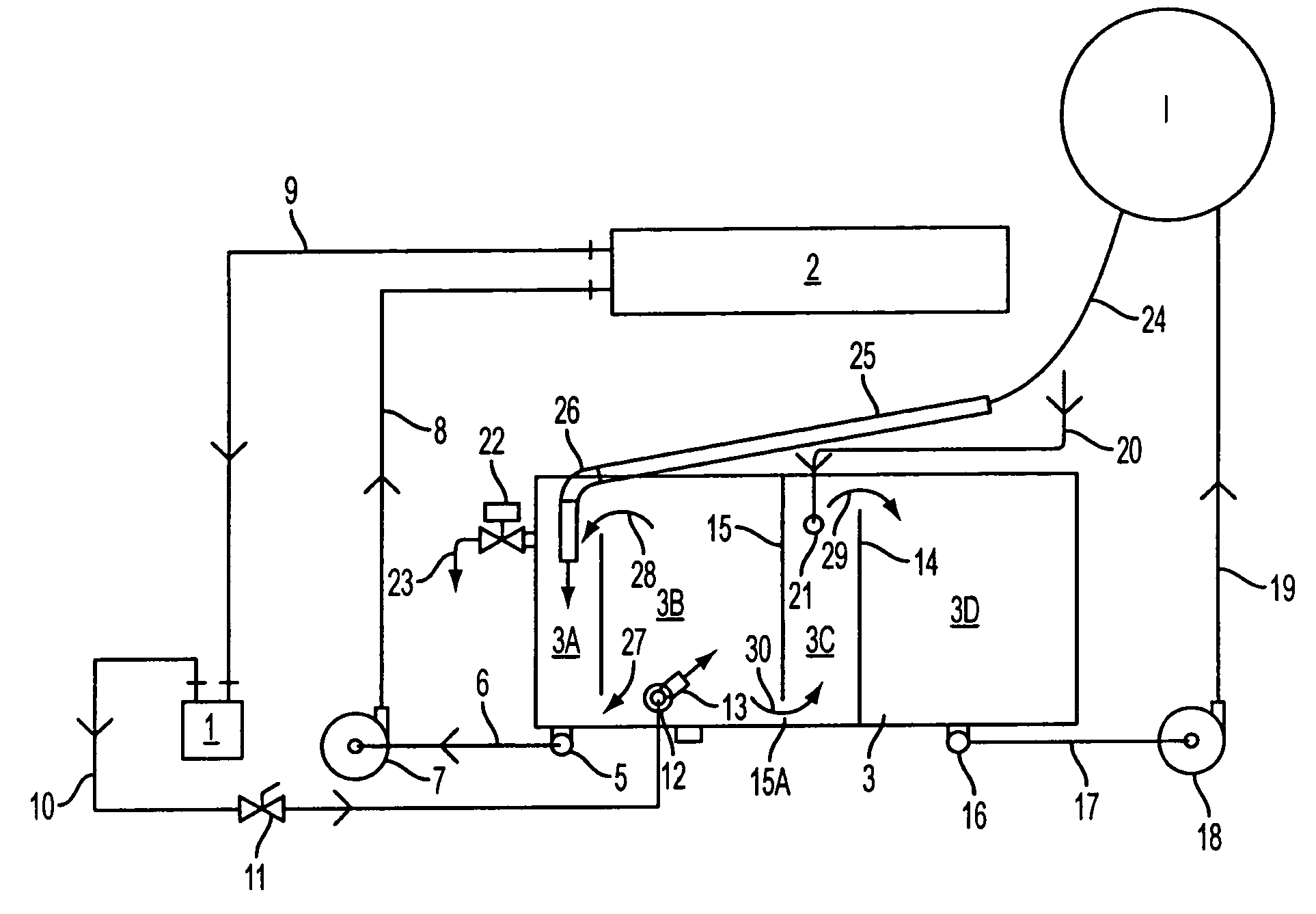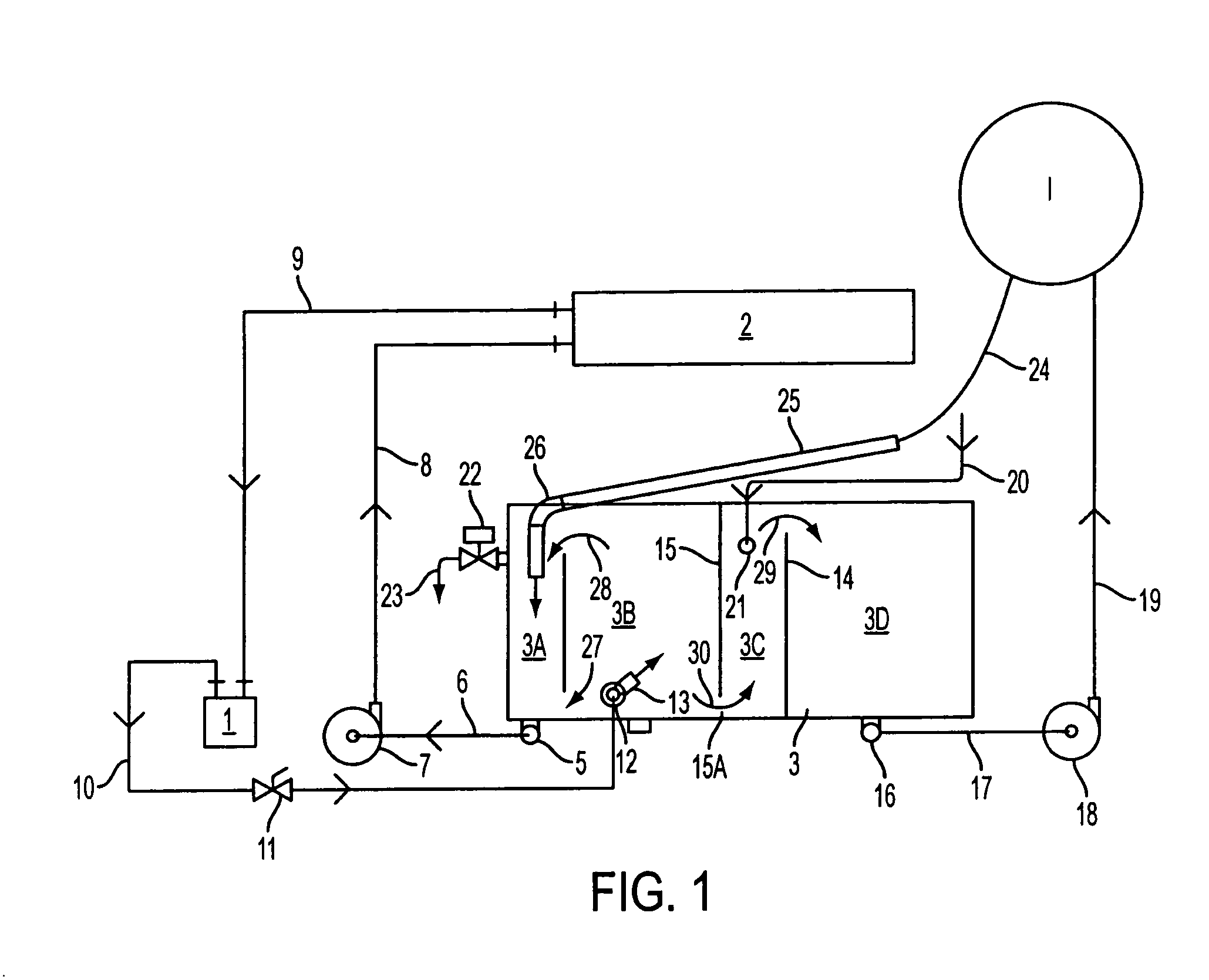Method for recycling liquids for treating food
a technology for recycling liquids and food, applied in the field of methods and systems for recycling liquids, can solve the problems of reducing the green weight value if not returned, preventing efficient recycling of return liquids, and affecting the quality of return liquids, so as to reduce the size of particulate materials, reduce the size of particle sizes, and reduce the effect of liquid recycling efficiency
- Summary
- Abstract
- Description
- Claims
- Application Information
AI Technical Summary
Benefits of technology
Problems solved by technology
Method used
Image
Examples
Embodiment Construction
[0019]The present invention addresses and solves problems attendant upon treating food with a liquid, as for injection of a solution, such as a brine for curing, seasoning, marinating or yield improvement, wherein the return liquid contains particles of the food. This problem is particularly queued in meat processing systems wherein solutions are injected into bodies of meat via needles under pressure and a return solution is recovered containing particles of the meat undergoing treatment, which particles exceed the size of the diameter of the needle, thereby causing plugging and reducing efficiency and effectiveness of the injection system. Conventional practices approach this problem by providing a recirculation system wherein the return solution is fed sequentially to a holding tank, screening device and then finer filters, before recycling to the injection device. This type of system expends considerable resources in maintaining the screens and filters during injection and durin...
PUM
 Login to View More
Login to View More Abstract
Description
Claims
Application Information
 Login to View More
Login to View More - R&D
- Intellectual Property
- Life Sciences
- Materials
- Tech Scout
- Unparalleled Data Quality
- Higher Quality Content
- 60% Fewer Hallucinations
Browse by: Latest US Patents, China's latest patents, Technical Efficacy Thesaurus, Application Domain, Technology Topic, Popular Technical Reports.
© 2025 PatSnap. All rights reserved.Legal|Privacy policy|Modern Slavery Act Transparency Statement|Sitemap|About US| Contact US: help@patsnap.com


